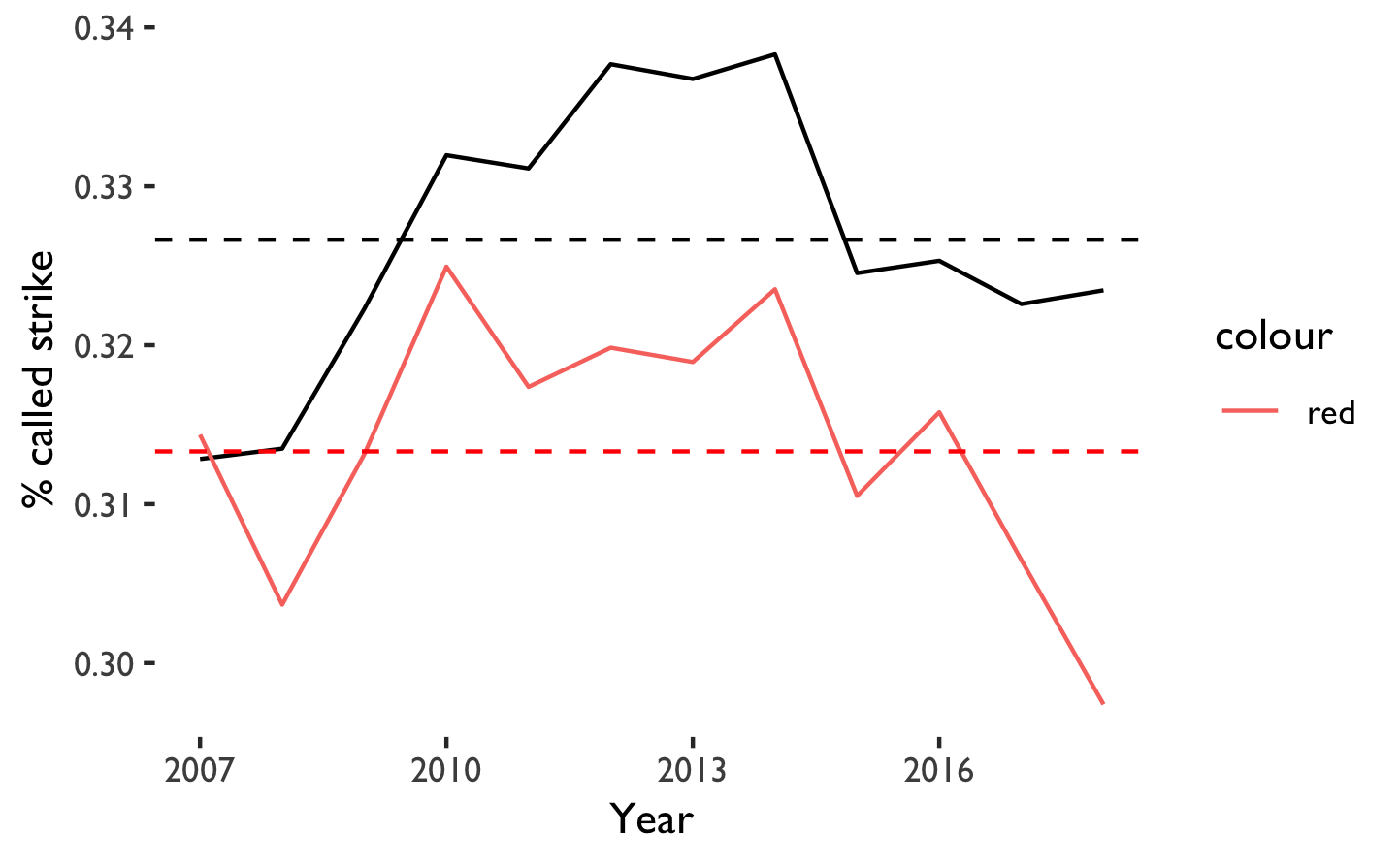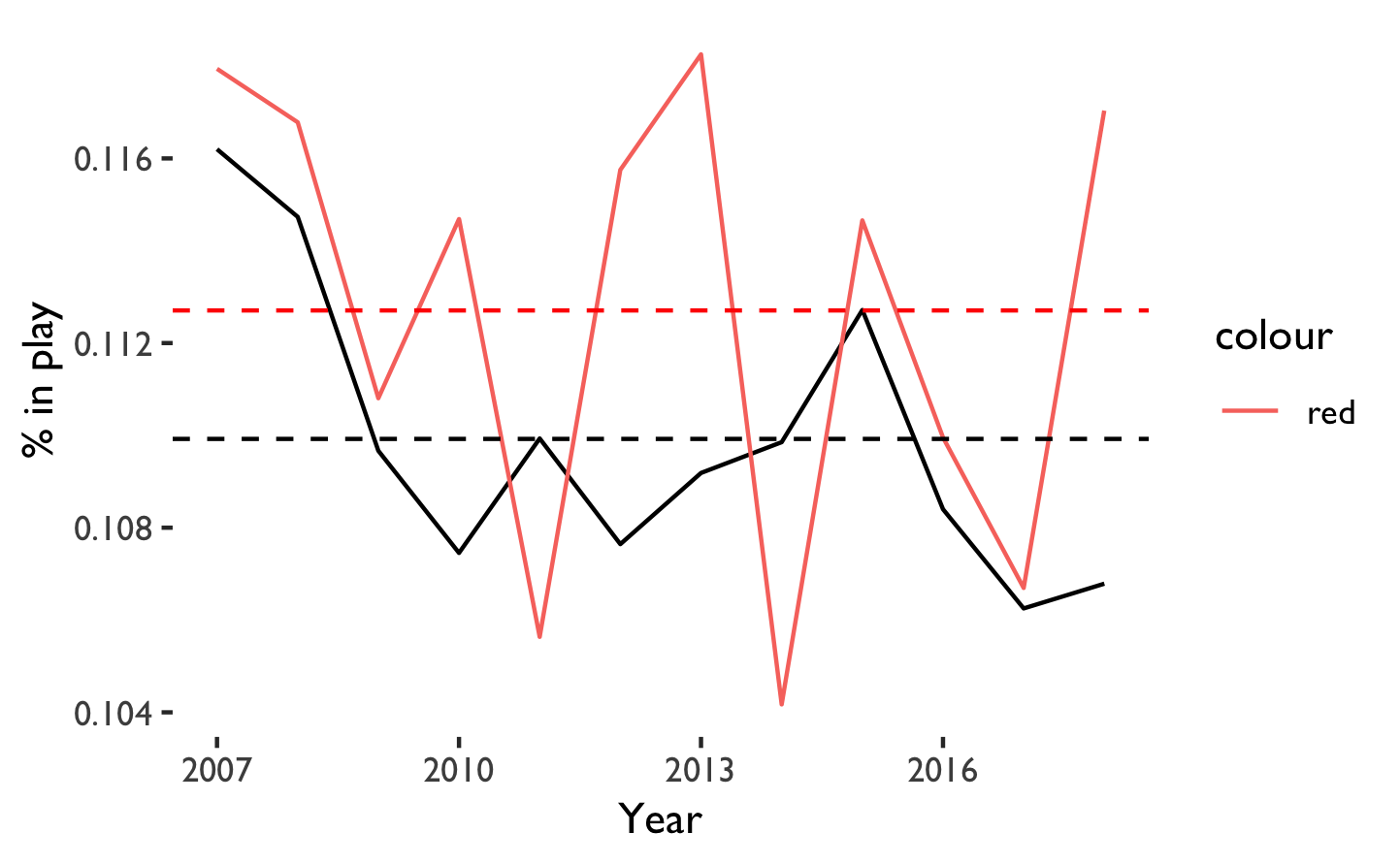What Happens After a Home Run?
We all know what a home run looks like. It’s one of baseball’s most common, though perhaps not best, types of highlights.
It has always seemed to me that batters are more likely to swing at the first pitch after a home run.
This plot shows the likelihood of the first pitch after a home run being a called strike plotted against the likelihood that the first pitch of any plate appearance is a called strike.

This is the same plot for pitches put in play:

And for whiffs (swings and misses):

And for whiffs + in play (all swinging strikes):

As a rule, called strikes on the first pitch of a plate appearance go down after a home run, whereas whiffs and balls put in play go up.

What can we conclude from this?
Generally batters are more agressive on the first pitch after a home run, while pitchers are more cautious. This is fairly intuitive. Somewhere in the back of the batter’s mind is the fact that his teammate was able to hit a home run. And, in the pitcher’s mind, the same thing.
Of course, this could partially be explained by logic. In some situations, if a pitcher just gave up a home run, perhaps his stuff or his control are waning. Either factor could lead a pitcher to miss outside the zone. Perhaps the location of the home run pitch itself missed its location inside the zone; a hanging slider or floating changeup.
Fun note: Teoscar Hernandez led all of baseball in swings and misses after home runs in 2018 with 7. The Yankees, perhaps unsurprisingly, led as a team with 21.